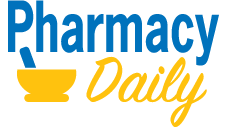AN UPSURGE in measles cases this year has prompted measles alerts in most Australian states and territories, with a renewed warning from Victoria issued yesterday.
While cases were initially recorded in people returning from overseas, the number of people who acquired their infection locally is increasing.
Health professionals have been urged to be alert for measles in patients presenting with a compatible illness, irrespective of their travel history.
Symptoms include fever, cough, sore or red eyes (conjunctivitis), runny nose, and feeling generally unwell, followed by a red rash.
The rash usually starts on the face before spreading down the body.
Symptoms can develop between seven to 18 days after exposure.
If measles is suspected, the person should be given a face mask and advised to get tested.
"Initial symptoms of measles may be similar to those of COVID and influenza," explained Dr Tarun Weeramanthri, Victorian Chief Health Officer.
"If a symptomatic person tests negative for COVID and/or influenza but develops a rash, they should be advised to continue isolating and be tested for measles," he said.
Health authorities note that anyone born during or since 1966 who does not have documented evidence of having received two doses of a measles-containing vaccine, or does not have documented evidence of immunity, is at risk of measles.
Unvaccinated infants are at particularly high risk of contracting measles, while young infants, pregnant women and people with a weakened immune system are at increased risk of serious complications from measles.
People who have been in a known exposure site and are not fully vaccinated for measles may be eligible to receive the MMR vaccine if they present within 72 hours. KB
The above article was sent to subscribers in Pharmacy Daily's issue from 11 Apr 25
To see the full newsletter, see the embedded issue below or CLICK HERE to download Pharmacy Daily from 11 Apr 25







